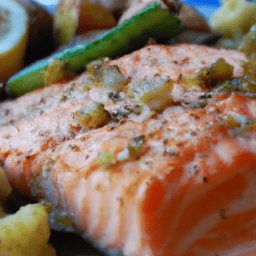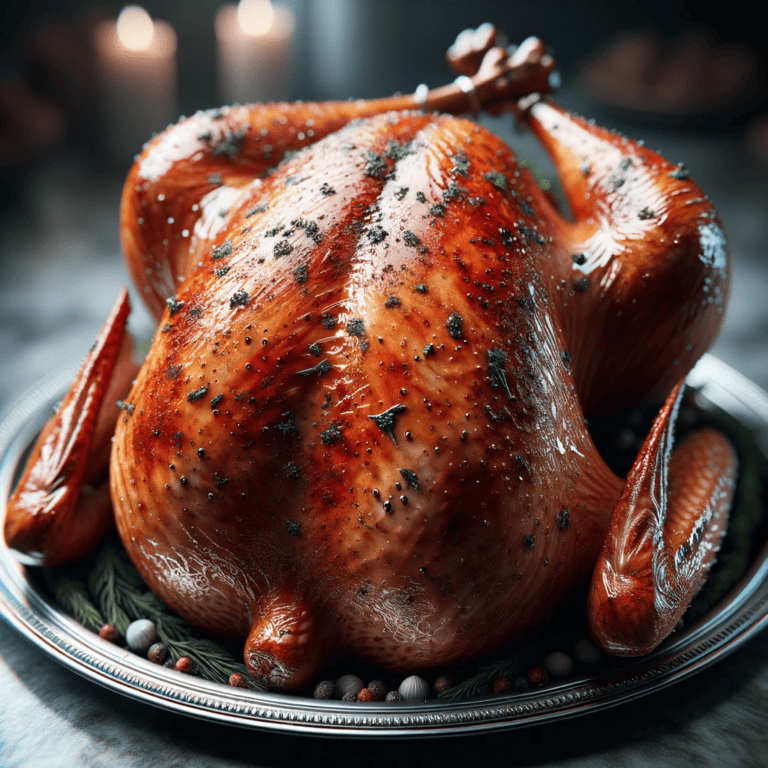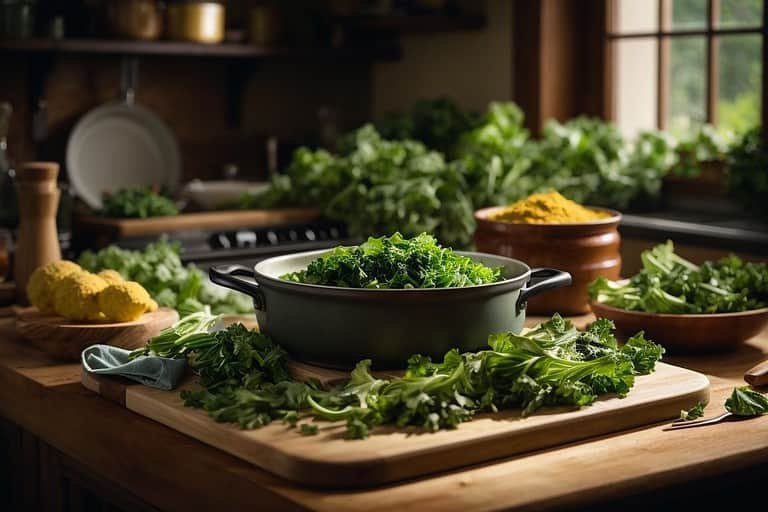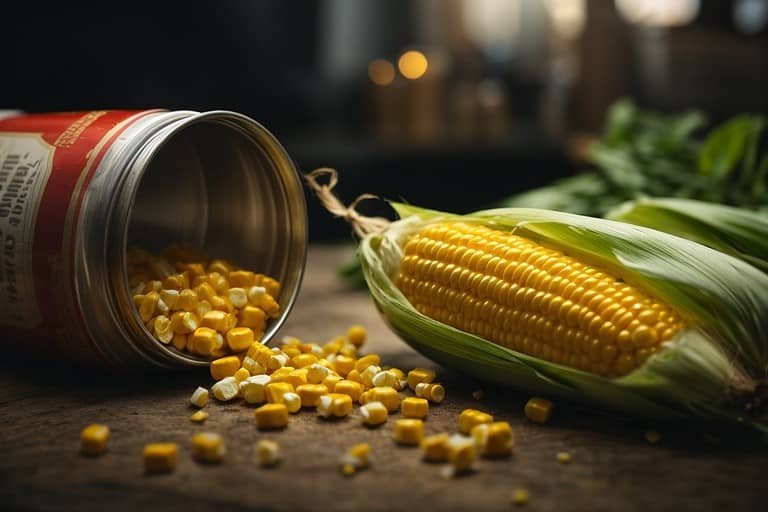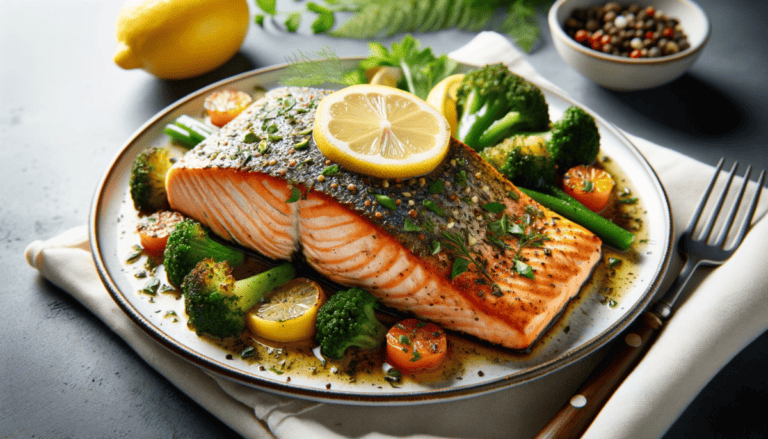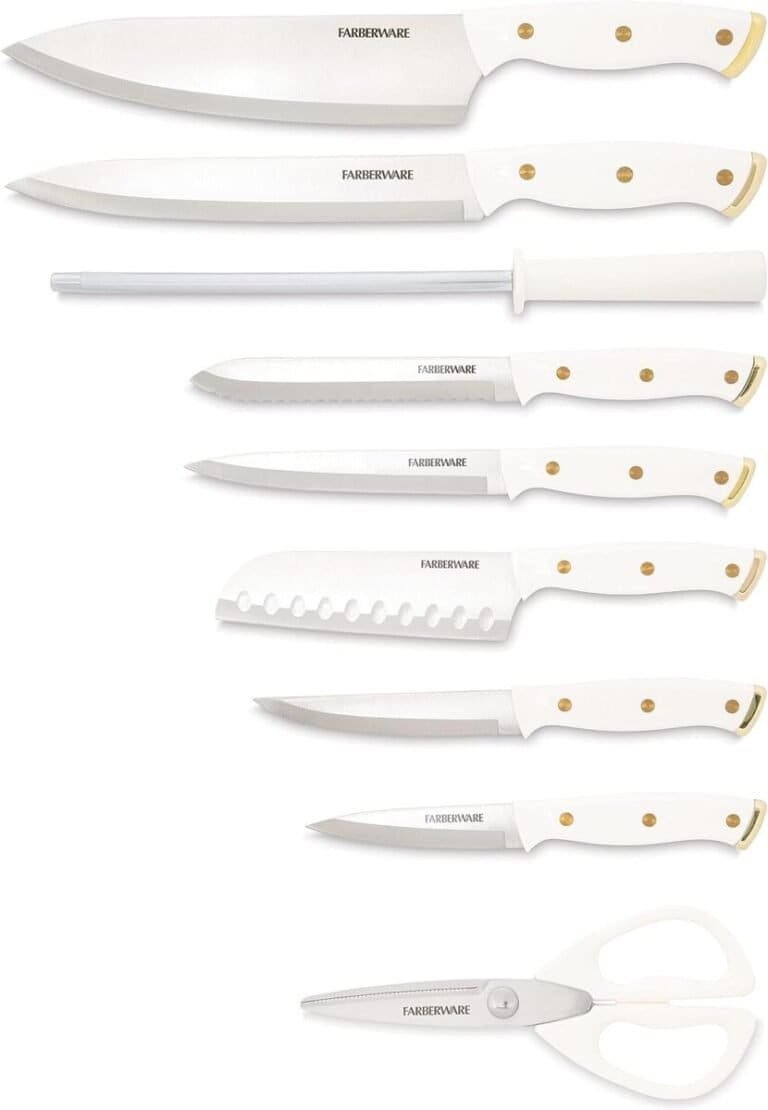How To Cook And Season Salmon
In this article, you will learn an easy and delicious way to cook and season salmon. Whether you’re a seasoned chef or new to the kitchen, this guide will walk you through the process step by step. From selecting the perfect fillet to creating a flavorful seasoning blend, you’ll discover tips and tricks that will elevate your salmon dishes to a whole new level. Get ready to impress your family and friends with this mouthwatering salmon recipe!
Understanding Different Varieties of Salmon
Salmon is a versatile and popular fish that comes in a variety of different types, each with its own unique characteristics. Familiarizing yourself with these varieties can help you choose the perfect salmon for your next meal.
Types of Salmon
The most common types of salmon found in the market are Chinook (also known as King), Coho, Sockeye, Pink, and Atlantic salmon. Chinook salmon is known for its rich flavor and oily texture, while Coho salmon has a milder taste and firm texture. Sockeye salmon is known for its deep red color and robust flavor, while Pink salmon is smaller and milder in flavor. Atlantic salmon, commonly farmed, has a mild and delicate flavor.
Flavor Profiles
Understanding the flavor profiles of different types of salmon can help you select the right variety for your taste preferences. If you enjoy a rich and intense flavor, Chinook salmon may be your best choice. For those who prefer a milder taste, Coho or Pink salmon could be the way to go. Sockeye salmon offers a more pronounced flavor, while Atlantic salmon is the most versatile, making it ideal for different cooking methods and flavor combinations.
Choosing Fresh Salmon
When shopping for fresh salmon, there are a few things to keep in mind to ensure you’re selecting the best quality. Look for salmon with firm, shiny flesh that has a mild, fresh scent. Avoid any fish with discolored patches or a strong, unpleasant odor. If possible, purchase salmon from a reputable seafood market or fishmonger who can provide you with information about the fish’s source and freshness. Remember, fresh salmon makes all the difference in the final taste of your dish.
Health and Nutritional Benefits of Salmon
Salmon is not only delicious but also incredibly nutritious, offering a range of health benefits that make it a smart choice for any diet.
Protein Content
Salmon is an excellent source of protein, a vital nutrient that plays a crucial role in muscle development and repair. Protein also helps you feel fuller for longer, making salmon a satisfying and nutritious option for meals.
Rich in Omega-3
One of the most significant health benefits of salmon is its high content of omega-3 fatty acids. These essential fats have been linked to numerous health benefits, including reducing inflammation, improving heart health, and boosting brain function. Including salmon in your diet regularly can help you meet your omega-3 needs and promote overall well-being.
Vitamins and Minerals
Salmon is packed with essential vitamins and minerals that support optimal health. It is a rich source of vitamin B12, which is necessary for nerve function and the production of red blood cells. Additionally, salmon contains vitamin D, which plays a crucial role in bone health and immune function. The fish is also a good source of minerals like selenium, potassium, and phosphorus, which are important for various bodily functions.
Best Methods for Cooking Salmon
Cooking salmon is a breeze, and there are numerous methods to choose from. Here are some of the best ways to cook this delicious fish:
Grilling Salmon
Grilling salmon imparts a smoky flavor and creates a slightly crispy exterior, while keeping the flesh juicy and tender on the inside. Preheat your grill to medium-high heat and lightly oil the grates to prevent sticking. Place the salmon skin-side down and cook for about 4-6 minutes per side, depending on the thickness of the fillet. Remember to keep a close eye on the fish to prevent overcooking.
Baking Salmon
Baking salmon is a foolproof method that results in moist and flavorful fish. Preheat your oven to 375°F (190°C) and place the salmon fillets in a lightly greased baking dish. Season the fish with your desired herbs and spices, cover with foil, and bake for about 12-15 minutes, or until the salmon flakes easily with a fork. This method allows you to easily cook multiple fillets at once, making it great for feeding a crowd.
Pan-Searing Salmon
Pan-searing salmon creates a beautiful golden crust while sealing in the juiciness of the fish. Heat a tablespoon of oil in a skillet over medium heat and add the seasoned salmon fillets, skin-side down. Cook for about 4-5 minutes, then carefully flip the fish and cook for an additional 3-4 minutes. The result is a crispy skin and moist, tender flesh.
Poaching Salmon
Poaching salmon is a gentle cooking method that keeps the fish incredibly moist and delicate. In a wide skillet or saucepan, bring a flavored liquid, such as broth or white wine, to a simmer. Place the seasoned salmon fillets in the liquid, cover the pan, and cook for about 5-7 minutes, or until the fish is opaque and flakes easily. This method allows the salmon to absorb the flavors of the poaching liquid, resulting in a subtle and delicious taste.
Preparation of Salmon before Cooking
Properly preparing your salmon before cooking is essential to achieve the best flavor and texture. Follow these steps to ensure your fish is ready for the cooking process.
Cleaning and Deboning
Start by rinsing the salmon under cold water and patting it dry with paper towels. Check for any remaining pin bones by running your fingers along the fillet. Use tweezers or fish bone pliers to remove any bones you may find. Taking the time to properly clean and debone your salmon will prevent any unwanted surprises when enjoying your meal.
Drying the Salmon
Before cooking, it’s crucial to dry the salmon thoroughly. Excess moisture on the surface of the fish can impact browning and prevent a crispy crust from forming. Use paper towels to gently blot the fillet, removing any excess moisture. This simple step will enhance the overall texture and appearance of your cooked salmon.
Applying Oil
To prevent the salmon from sticking to the cooking surface, it’s necessary to apply a thin layer of oil to the fish. Choose an oil with a high smoke point, such as vegetable or avocado oil, and lightly brush it onto the fillet. This small but important step ensures that your salmon cooks evenly and releases easily when it’s time to serve.
Seasoning Techniques for Salmon
Proper seasoning is key to enhancing the natural flavors of salmon and creating a delicious meal. Consider the following tips when seasoning your salmon.
When to Season
To infuse the maximum amount of flavor into the fish, season your salmon about 30 minutes before cooking. This allows enough time for the seasonings to penetrate the flesh, adding depth and complexity to your dish. If you’re short on time, you can still achieve great results by seasoning the salmon just before cooking, though the flavors may not be as pronounced.
Using Salt
Salt plays a crucial role in seasoning salmon. It not only enhances the fish’s natural flavors but also helps to retain moisture and promote even cooking. Generously sprinkle kosher salt or sea salt over both sides of the salmon fillet, ensuring you cover the entire surface.
Herbs and Spices for Salmon
Salmon pairs well with a wide range of herbs and spices, allowing you to get creative with flavor combinations. Popular choices include dill, lemon zest, garlic, parsley, thyme, paprika, and black pepper. Experiment with different combinations to find your personal favorites and create unique flavor profiles for your salmon dishes.
Avoiding Over-Seasoning
While seasoning is essential, it’s important not to overdo it. Remember that salmon has a delicate taste that can easily be overwhelmed by excessive seasoning. Start with a moderate amount of herbs and spices, and taste as you go to ensure the flavors are balanced. You can always add more seasoning later if needed.
Simple Salmon Seasoning Recipes
If you’re looking for inspiration, here are three simple yet flavorful salmon seasoning recipes to try:
Garlic and Herb Seasoning
Mix together minced garlic, chopped fresh dill, lemon zest, salt, and black pepper. Rub the mixture onto the salmon fillets, covering both sides. Allow the salmon to sit for 30 minutes to allow the flavors to meld. This seasoning recipe adds a delightful freshness and brightness to the fish.
Asian-Inspired Seasoning
Combine soy sauce, sesame oil, grated ginger, minced garlic, honey, and a pinch of red pepper flakes. Brush the mixture onto the salmon fillets, ensuring they are well-coated. Let the salmon marinate for 30 minutes before cooking. This seasoning recipe infuses the salmon with a savory and slightly sweet Asian-inspired flavor.
Citrus and Dill Seasoning
Mix together lemon juice, orange zest, chopped fresh dill, salt, and black pepper. Drizzle the mixture over the salmon fillets and let it sit for 30 minutes. This seasoning recipe provides a zesty and refreshing taste, perfect for those who enjoy a citrusy twist.
Marinating Salmon
Marinating salmon is a great way to infuse it with additional flavors and enhance its tenderness. Here’s what you need to know about marinating salmon.
Benefits of Marinating
Marinating allows the flavors to penetrate the fish, resulting in tastier and more tender salmon. It also helps to break down the proteins and fibers in the fish, making it easier to digest and resulting in a melt-in-your-mouth texture. Marinating can also help mask any fishy taste that some people find off-putting.
Marinade Recipes
When creating a marinade, ensure it includes an acid (such as lemon juice or vinegar), oil (such as olive oil or sesame oil), and seasonings of your choice. You can experiment with different combinations of ingredients to create unique and delicious marinades. Some popular choices include teriyaki marinade, honey mustard marinade, and lemon herb marinade.
Proper Marinating Time
Salmon fillets can benefit from marinating anywhere between 30 minutes to 24 hours, depending on your desired intensity of flavor. Delicate coatings and flavors tend to require a shorter marinating time, while bolder flavors can withstand longer marinating periods. Be cautious not to marinate for too long, as the acid in the marinade can start breaking down the fish, resulting in an unpleasant texture.
Serving Suggestions for Salmon
Salmon is a versatile fish that pairs well with a variety of flavors and accompaniments. Consider the following serving suggestions to make your salmon dishes even more delectable.
Pairings with Wine
Salmon’s flavors can be enhanced by pairing it with the right wine. For a light and mild-flavored salmon, a crisp white wine like Sauvignon Blanc or Pinot Grigio complements the fish beautifully. If you’re serving a rich and flavorful salmon, consider a medium-bodied red wine such as Pinot Noir or Merlot, which provides a nice contrast.
Side Dishes
When it comes to side dishes, salmon offers many possibilities. For a healthy and refreshing option, serve your salmon with a side of roasted vegetables or a green salad. If you prefer something heartier, consider pairing it with creamy mashed potatoes or a quinoa pilaf. Asparagus, steamed broccoli, or sautéed spinach are all excellent vegetable choices to accompany salmon.
Presentation Techniques
To elevate your salmon dish, consider different presentation techniques. Garnish your salmon with a sprig of fresh herbs, such as dill or parsley, to add a pop of color. You can also serve it on a bed of vibrant mixed greens or arrange it with grilled vegetables for an eye-catching plate. Remember, presentation contributes to the overall dining experience and can make your salmon dish more appealing and enticing.
Storing and Reheating Cooked Salmon
Knowing how to properly store and reheat cooked salmon ensures that you can enjoy any leftovers without sacrificing flavor or quality.
Proper Storage Techniques
To store cooked salmon, let it cool to room temperature, then transfer it to an airtight container or wrap it tightly in aluminum foil or plastic wrap. Store it in the refrigerator for up to three days. If you’ll be keeping it for longer, freezing the cooked salmon is the best option. Place it in an airtight container or freezer bag and store it in the freezer for up to three months.
Reheating without Drying Out
When reheating your salmon, it’s important to avoid drying it out. One of the best methods is to gently warm it in a skillet over low heat, adding a drizzle of olive oil or a splash of broth to keep the fish moist. Another option is to cover the salmon with foil and place it in a preheated oven at 275°F (135°C) for about 10-15 minutes. This slow reheating method ensures that the salmon stays moist and retains its delicate texture.
Safety Precautions
When reheating cooked salmon, it’s crucial to ensure it reaches a safe internal temperature of 145°F (63°C) to kill any potential bacteria. Using a food thermometer can help you accurately gauge the temperature and enjoy your reheated salmon with confidence. Always discard any leftover salmon that has been left at room temperature for more than two hours to prevent foodborne illness.
Common Mistakes When Cooking Salmon
Cooking salmon can be a straightforward process, but it’s easy to make some common mistakes that can affect the final result. Be aware of these potential pitfalls to ensure your salmon turns out perfectly every time.
Overcooking
One of the most common mistakes when cooking salmon is overcooking it. Salmon is best cooked until it reaches an internal temperature of 145°F (63°C) or until it flakes easily with a fork. Overcooking can result in dry, tough fish that lacks flavor. It’s important to closely monitor the cooking time and remove the salmon from heat as soon as it reaches the desired doneness.
Under-seasoning
While it’s important not to over-season salmon, under-seasoning can result in bland and tasteless fish. Remember to season the fish generously with salt and experiment with different herbs and spices to enhance its natural flavors. A good rule of thumb is to taste as you go, adding seasoning gradually until you achieve the perfect balance.
Not Letting the Salmon Rest
Resting the salmon for a few minutes after cooking allows the juices to redistribute, resulting in a more tender and flavorful fish. While it may be tempting to dive right in, resist the urge and let the salmon rest for about five minutes before serving. This allows the flavors to meld and ensures a more enjoyable dining experience.
Forgetting to Preheat the Pan
When pan-searing salmon, it’s crucial to preheat the skillet before adding the fish. Preheating the pan ensures even cooking and promotes the development of a delicious crust. Heating the pan over medium-high heat for a few minutes before adding the salmon helps create a beautifully seared exterior and locks in the moisture for a succulent result.
By understanding the different varieties of salmon, mastering the best cooking methods, and knowing how to season and serve it properly, you can elevate your salmon dishes to new heights. Whether you’re grilling, baking, or pan-searing, salmon offers a world of flavors waiting to be explored. So head to your local seafood market, choose a fresh fillet, and embark on a culinary adventure with this incredibly nutritious and delicious fish. Happy cooking!

